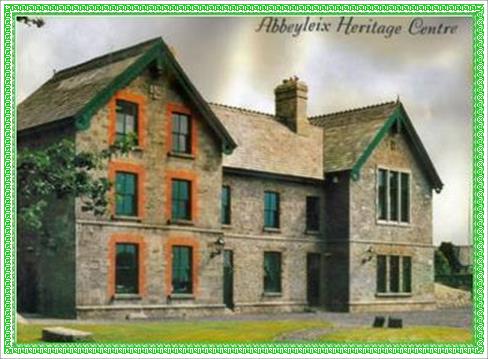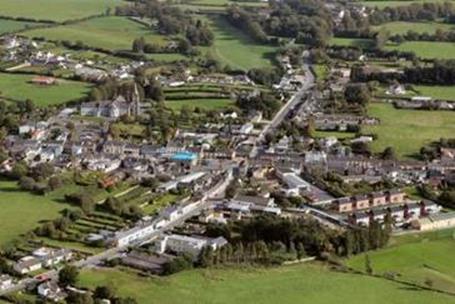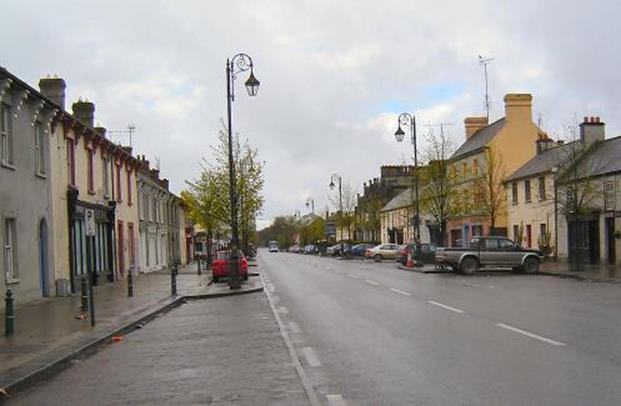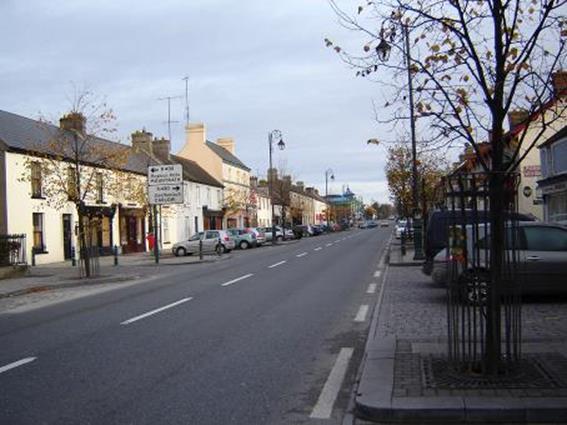|
Abbeyleix Lore |
|
Heritage Town of Abbeyleix.
December 2013 |
|
. Abbeyleix is a small rural town, population approximately 2000, which is situated in the midlands of Ireland some 96 kilometers (60 miles) south-west of Dublin in the county of Laois, also known in older times as County Leix. The town gets its name from the Cistercian Abbey which was founded nearby on the banks of the river Nore in 1183 and flourished until it was suppressed in1542. As was the custom in those years, a village grew up beside the monastery, and it acquired the name Abbeyleix.
|

|
Some years ago, (1995) the modern town achieved the status of a Heritage Town, based on the fact that it was the first planned estate town in Ireland. In the late eighteenth century, the local landlord, Viscount de Vesci, realized that the old village of Abbeyleix had developed on very marshy and unhealthy ground near the river. He decided to move the village to a better site, and planned and built a new town on higher ground, the site of the present day town. The village tenants were moved into the new town and the old village was razed to the ground.As the years passed, the town of Abbeyleix progressed and expanded, slowly at first, but rapidly in recent times, into the picturesque country town it is today. The de Vesci family owned the Abbeyleix Estate for 298 years, until 1996 when it was acquired by Sir David Davies.
|

|
For a more detailed and in depth look at the heritage and history of Abbeyleix and the County of Laois in general, visit Sineadin the Heritage Centre at the northern end of the town. The Heritage Centre and Museum is housed in the old North National School building. Alternatively, log on to their website heritagehousemuseum.com . Either way you will be most welcome. |
|
“In or about 1183, thanks to the benevolence and generosity of the King of Leix, Conor O'More, Cistercian monks from the Abbey of Baltinglass came to found a monastery in this area. Conor O'More granted the Order most of the lands which makeup the present Parish of Abbeyleix, and as was the custom in those days, the monks chose a site quite close to the river. Tradition in the area has maintained that the Abbey was situated down near what is still known as the 'Monks' Bridge ', across the Nore, and that the present day Church of Ireland church on the local Estate, is built on |

|
the site of the old Abbey Church. In or around 1888, several skeletons wrapped in what seemed to be decayed habits, were unearthed when foundations were being dug out for some glasshouses nearby. These glasshouses stood about 100 metres directly to the east of the church, which is where the Cistercians would traditionally have had their graveyard. Consequently, although no physical remains of the old Abbey have been located during the last two centuries, it is a reasonable assumption that in this case tradition is probably correct and that the Abbey stood just a few hundred metres due north of the Nore and around the site of the present Church of Ireland church on Abbeyleix estate.”
|
|
“The Abbey was officially dedicated to Beata Maria de Lege Dei, but soon was commonly known as the 'Abbey de Lege De', and sometime later as 'Our Lady of Abbeyleix', or simply 'the Abbey of Leix', perhaps as 'Mainistir Laoise' to the Irish speaking population. Once established, the Abbey developed rapidly to become one of the most important foundations in the Diocese of Leighlin. Many were drawn to the disciplined and contemplative life of the monastery. The whole region was still part of the secular parish of Clonkeen and was to remain so until the 18th century, but very little is known of the pastors or clergy who administered to the spiritual needs of the community in conjunction with the Cistercians. Two receive passing mention in historical records, a Canon Geoffreay O'Byrne who was apparently a famous preacher in 1482, and Canon James O'Curryn who was in Clonkeen parish in 1506.” In fact, it would seem, that from the moment of its foundation, the Abbey of Leix developed rapidly into a centre of learning of great prominence, becoming the Cistercian Mother House of the English speaking world for almost 400 years. As the surrounding woodlands were cleared making more land available for cultivation and stock, the wealth and wellbeing of the Abbey grew accordingly. The chivalrous nature of the early Normans and the respect of Irish chieftains for religious foundations left the Abbey of Leix relatively immune at first, to the changes in secular and political fortunes which eddied around it.” |
|
The Abbey of Leix |
|
The old Estate Church, believed to be the site of the old Cistercian Abbey of Leix. |

|
Abbeyleix Main Street Looking North
|
|
Photo courtesy of Pat Enright |

|
Abbeyleix Main Street Looking South |


|
No Longer a traffic blackspot since the bypass motorway opened, Abbeyleix is a lovely quiet town, well worth a visit. |